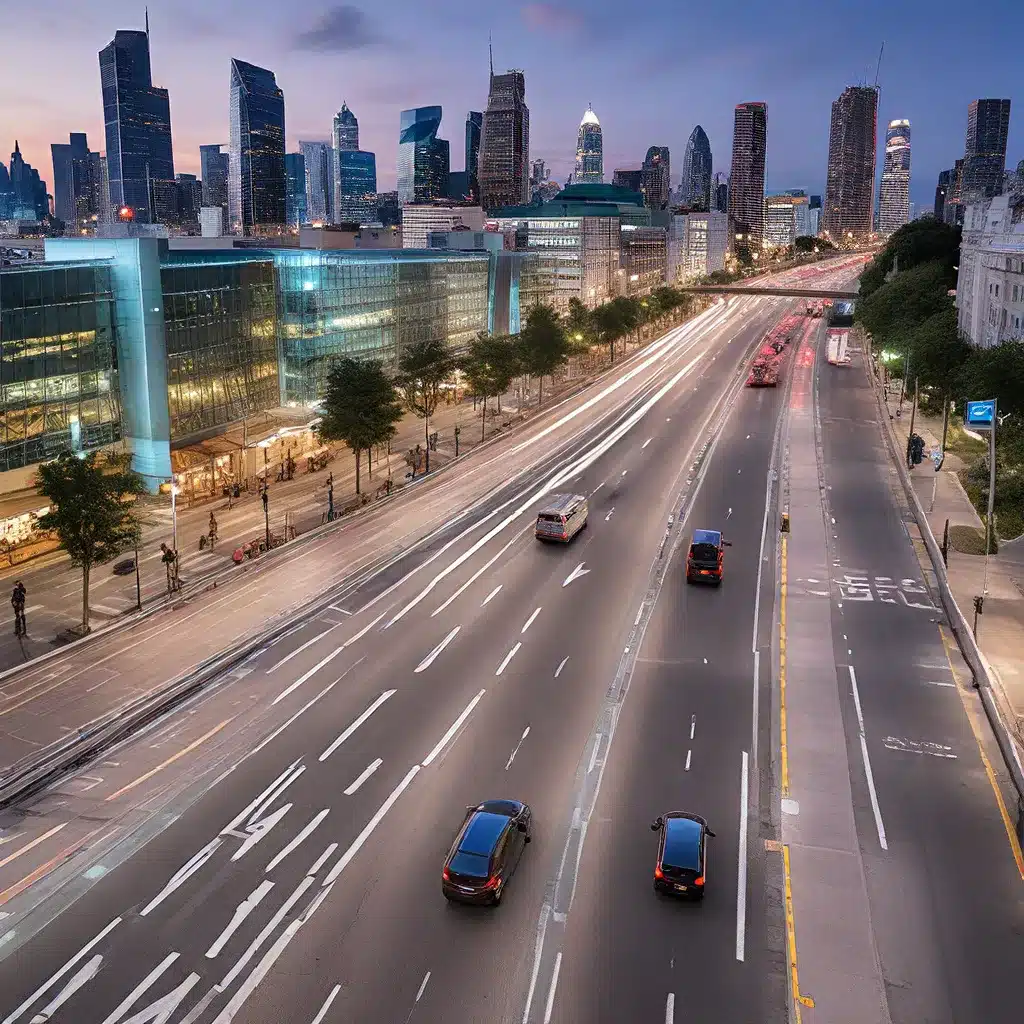
The Challenges of Modern Urban Traffic
In today’s rapidly growing cities, traffic congestion has become a persistent and seemingly intractable problem. Traffic slowdowns can cause debilitating congestion, adding to urban air pollution and diminishing the overall quality of life for residents. Businesses suffer from delivery delays and lost productivity, while emergency vehicles are slowed down by bottlenecks, potentially putting lives at risk.
Municipalities are constantly challenged to do more with less when it comes to managing their traffic infrastructure. Constructing new roads and bridges is often prohibitively expensive, and public budgets are always tight. In the face of these challenges, innovative cities – often referred to as “Smart Cities” – are turning to sensor networks and IoT (Internet of Things) technologies to increase traffic flow and improve safety.
Sensor Networks and IoT for Smart Traffic Management
Smart Traffic Management Systems, which fall under the broader category of Intelligent Transportation Systems (ITS), are automated systems that incorporate the latest advancements in IoT technology. These systems utilize a coordinated array of sensors, cameras, cellular routers, and automation to dynamically monitor and control traffic flow, enhancing both efficiency and safety.
By integrating these smart traffic technology solutions, municipalities and regional transportation departments can affordably and quickly improve the performance of their existing infrastructure. These systems can optimize traffic flow and enhance safety by using sensors and cameras to dynamically adjust control mechanisms such as traffic lights, freeway on-ramp meters, bus rapid transit lanes, highway message boards, and even speed limits.
The Key Components of Smart Traffic Management Systems
At the core of Smart Traffic Management Systems are a variety of sensor technologies that collect real-time data on traffic conditions, vehicle movements, and environmental factors. These sensors can include:
- Vehicle Detection Sensors: Strategically placed along roads and intersections to monitor traffic volume, flow, and patterns.
- Video Analytics Cameras: Analyzing video streams to detect vehicle types, speeds, and traffic incidents.
- Environmental Sensors: Measuring air quality, weather conditions, and other environmental factors that can impact traffic.
- Acoustic Sensors: Detecting sounds, such as honking horns or screeching tires, to identify potential safety issues.
This rich sensor data is then aggregated and analyzed by advanced algorithms and software running on edge computing devices or in the cloud. These systems can automatically adjust traffic signals, ramp meters, and other control mechanisms to optimize traffic flow and minimize congestion in real-time.
Improving Urban Mobility with Sensor Networks
One of the primary benefits of sensor-based Smart Traffic Management Systems is their ability to improve urban mobility and reduce congestion. By continuously monitoring traffic patterns and conditions, these systems can dynamically adjust traffic signals, ramp meters, and other control mechanisms to keep vehicles moving efficiently.
Advanced traffic management software can also integrate with public transportation systems, prioritizing the movement of buses and other high-occupancy vehicles. This helps to encourage the use of public transit and reduce the number of single-occupancy vehicles on the roads.
Moreover, sensor-enabled traffic management can provide valuable real-time information to drivers, either through variable message signs or mobile apps. This allows motorists to make informed decisions about their routes, avoiding congestion and choosing more efficient paths to their destinations.
Enhancing Safety with Sensor Networks
In addition to improving traffic flow, sensor-based Smart Traffic Management Systems can also enhance safety on city streets and highways. Vehicle detection sensors and video analytics cameras can identify dangerous driving behaviors, such as speeding, sudden lane changes, or vehicles running red lights. The system can then automatically adjust traffic signals or send alerts to law enforcement to address these safety concerns.
Environmental sensors, such as those monitoring weather conditions or air quality, can also play a crucial role in enhancing safety. By detecting icy roads, heavy rain, or poor visibility, the system can adjust speed limits, warn drivers, and even temporarily close certain roads or intersections to prevent accidents.
Ensuring Secure and Resilient Sensor Networks
As sensor networks and IoT technologies become increasingly integral to Smart Traffic Management Systems, the issue of security becomes paramount. These systems must be designed with robust security protocols and data encryption to protect against cyber threats, such as hacking, unauthorized access, or data manipulation.
Encryption techniques, access controls, and network segmentation are just a few of the security measures that must be implemented to ensure the integrity and reliability of the sensor data and the overall system. Additionally, redundancy and failover mechanisms should be in place to maintain system functionality in the event of a hardware or software failure.
Optimizing Energy Consumption in Smart Traffic Management
Another critical consideration in the design of sensor-based Smart Traffic Management Systems is energy efficiency. With numerous sensors, cameras, and edge computing devices deployed across the city, the overall energy consumption of these systems can be substantial.
Strategies for energy optimization may include the use of low-power sensor nodes, solar-powered equipment, and intelligent power management algorithms. By minimizing energy usage, municipalities can reduce operating costs and minimize the environmental impact of their Smart Traffic Management Systems.
The Future of Sensor Networks and Smart Cities
As urban populations continue to grow, the demand for efficient and sustainable transportation solutions will only intensify. Sensor networks and IoT technologies are poised to play a pivotal role in the development of “Smart Cities” that can effectively manage traffic, reduce congestion, and enhance safety.
Through the integration of advanced sensor technologies, intelligent software, and cloud-based analytics, Smart Traffic Management Systems will continue to evolve and become more sophisticated. These systems will seamlessly connect with other urban infrastructure, such as connected vehicles, smart streetlights, and emergency response systems, to create a holistic, data-driven approach to urban mobility and transportation management.
By embracing sensor-based technologies and IoT solutions, city leaders and transportation planners can unlock new opportunities to improve the quality of life for their citizens, support economic growth, and create a more sustainable, resilient, and livable urban environment.
Explore the possibilities of sensor networks and IoT technologies for Smart City infrastructure on the Sensor Networks organization website.